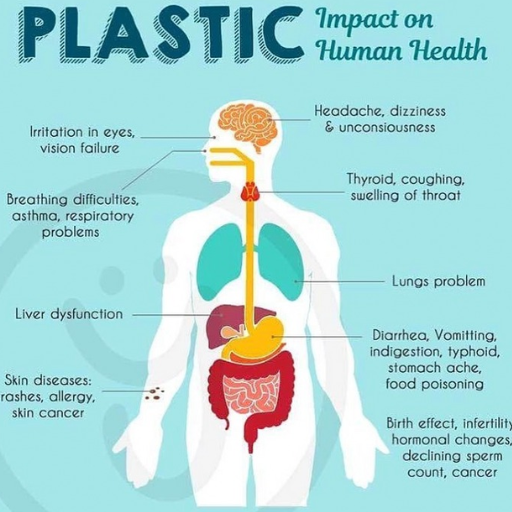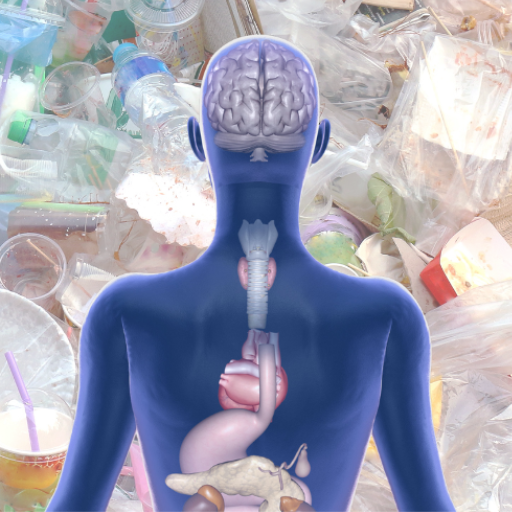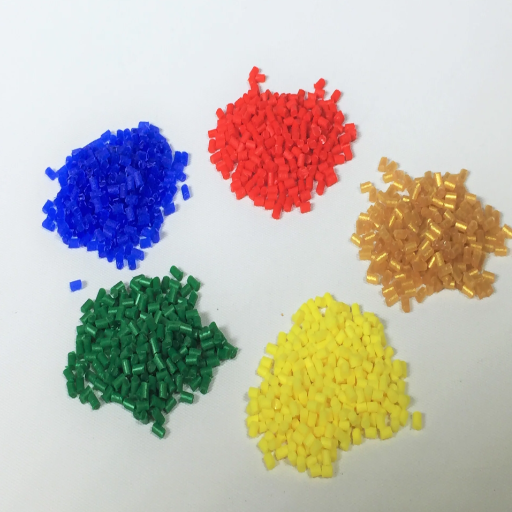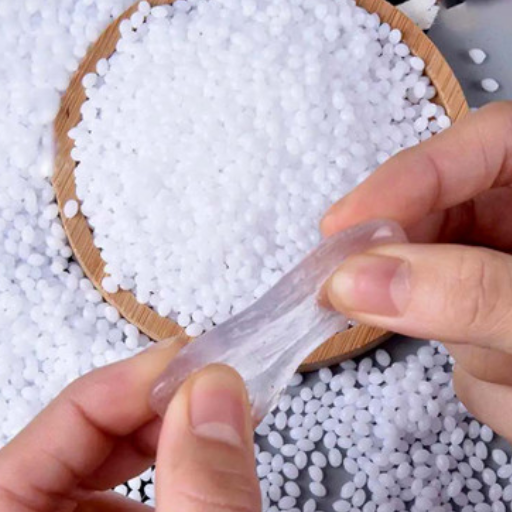Plastic has become an indispensable material in modern life, utilized across industries for its versatility and durability. However, its widespread use has raised alarming questions about its impact on human health and the environment. This article explores the multifaceted risks associated with plastic, from the chemicals it contains to its long-term environmental footprint, tracing how these dangers circle back to affect human health. It will examine the direct health impacts of plastic exposure, including chemical leaching and microplastic ingestion, alongside the broader risks tied to plastic pollution. By shedding light on these pressing concerns, this post aims to offer a clear understanding of why addressing plastic’s pervasive presence is essential for safeguarding both public health and the planet.
What Are the Health Risks of Plastic Exposure?

Plastic exposure poses numerous health risks, primarily due to the chemicals used in its production and the breakdown of plastics into microplastics. Harmful chemicals such as bisphenol A (BPA) and phthalates can leach from plastic products, potentially disrupting endocrine functions, impairing reproduction, and increasing the risk of chronic conditions like diabetes and cancer. Additionally, the ingestion or inhalation of microplastics—tiny plastic particles found in water, food, and air—can lead to inflammation, oxidative stress, and other negative health effects. These risks highlight the urgent need to minimize plastic use and exposure to protect human health.
Understanding the Health Effects of Plastic Chemicals
Plastics such as bisphenol A (BPA) and phthalates can severely harm human health as they have the ability to imitate hormones and disturb the endocrine system. BPA is found in food containers and water bottles and is associated with reproductive disorders, obesity as well as increased risks of certain cancers. Phthalates, associated with cosmetics and medical toy devices, interfere with hormone regulation and are linked to problems with development and fertility.
Moreover, the exposure to these chemicals may lead to serious health complications later on. Research indicates that microplastics—such as tiny fragments of plastic found within water, air, and food—have the ability to penetrate human bodies leading to oxidative stress, inflammation as well as potential damage to vital organs. In addition, the environment comes under risk of damage due to the presence of plastic additives such as flame retardants. These pose the threat of damage to the neurological and immune systems.
These claims stress the need to avoid the harmful impacts of plastic chemicals by taking up safer alternatives, recycling properly, and endorsing policies aimed at controlling the danger of hazardous plastic manufacturing. Adopting these strategies will aid individuals and communities alike in having a more robust preventive system.
How Do Microparticles of Plastic Enter the Human Body?
Microparticles of plastic enter the human body through various pathways, primarily ingestion, inhalation, and dermal contact. Contaminated food and water are major sources; seafood, salt, and bottled water frequently contain plastic particles due to environmental pollution. Additionally, airborne microplastics, originating from sources like synthetic fabrics, industrial emissions, and vehicle tire wear, can be inhaled and deposited in the respiratory system. Dermal absorption is less common but could occur through contact with products like cosmetics or polluted environments. These pathways highlight the pervasive presence of microplastics and the need for immediate action to reduce exposure.
Exploring the Adverse Effects of Plastic Pollution on Human Health
The spread of plastic pollution impacts humans both directly and indirectly, and at deeper levels, too. One key concern is nurturing microplastics. Microplastics are minuscule plastic particles that enter a human body through the food they eat, water they drink, and air they breathe. Research indicates that microplastics are capable of initiating inflammatory reactions and disturbing gut microbiota, as well as exposing people to dangerous chemicals like bisphenol A (BPA) and phthalates that frequently are utilized in the making of plastics. Additionally, these chemicals disrupt endocrine function and, in turn, lead to other health risks like reproductive issues, developmental problems and other endocrine related disorders.
Beyond ingesting microplastics, their inhalation also has detrimental effects on respiration. Particulate matter that is small enough to be breathed in may remain lodged in the lungs, bringing about the inflammation and irritation or causing long term chronic lung diseases. People working in occupations that deal with synthetic materials are at greater risk of being exposed. Furthermore, some constituents of these plastics have been associated with cancerous effects, raising even more concern about their health.
The extremities of pollution, particularly plastic waste, initiates a chain reaction of toxic seepage into delicate food webs and ecosystems. Fish and agricultural produce exposed to contaminated soil or water can pose a risk to humans. Combating this issue involves not just personal steps, like cutting down on single-use plastics, but also requires heightened policies aimed at controlling the creation and disposal of plastics.
How Do Microplastics Impact Human Health?

Microplastics impact human health in multiple ways, primarily through ingestion, inhalation, and dermal exposure. When consumed, either through contaminated food or water, microplastics may accumulate in the body, potentially causing inflammation, oxidative stress, and disruption of cellular processes. Certain microplastics carry toxic chemicals or harmful pathogens, which can further exacerbate health risks. Additionally, inhaled microplastics may lead to respiratory issues, while their interaction with immune responses could have far-reaching consequences. Although research is still ongoing, the emerging evidence highlights the need for precautionary measures to limit exposure and safeguard human health.
What Are Microplastics and How Are They Found in Humans?
Microplastics are tiny plastic particles, typically less than 5 millimeters in size, that result from the breakdown of larger plastic items or are manufactured for specific uses, such as microbeads in cosmetics. They are categorized into two types: primary microplastics, created intentionally for commercial purposes, and secondary microplastics, which form as larger plastics degrade in the environment.
Humans come into contact with microplastics through various pathways. These particles are commonly found in food, water, and even the air we breathe. Seafood often contains microplastics due to ocean contamination, while bottled and tap water, as well as processed foods, can also be significant sources. Additionally, airborne microplastics may be inhaled, particularly in urban areas with high levels of plastic pollution. Studies have detected microplastics in human blood, lungs, and even placenta, raising concerns about their potential long-term effects on health.
Assessing the Impact of Microplastics on Human Cells and Tissues
Research indicates that microplastics may pose significant risks to human health due to their ability to interact with cells and tissues. Studies demonstrate that microplastics can lead to oxidative stress, inflammation, and cellular damage upon contact with human cells. Their small size allows them to traverse biological barriers, potentially accumulating in organs such as the lungs, liver, and kidneys. This could interfere with regular cellular functions and contribute to chronic health issues such as respiratory diseases or even cancers.
Furthermore, microplastics often carry toxic chemicals, such as bisphenol A (BPA) and phthalates, which may leach into tissues and disrupt endocrine functions. Emerging research even suggests that microplastics might influence immune system responses, increasing susceptibility to infections. While definitive conclusions on long-term health effects are limited, the current evidence underscores the urgent need to better regulate plastic pollution and minimize human exposure.
Understanding Human Exposure to Microplastics Through Drinking Water
Microplastics make their way into drinking water through various pathways, including the breakdown of larger plastic debris, runoff from landfills, and wastewater discharge. These microscopic plastic particles have been detected in both bottled and tap water worldwide. Studies estimate that humans consume thousands of microplastic particles annually through drinking water alone.
Filtration processes in water treatment plants are not always capable of completely removing microplastics, as their small size allows some to bypass traditional systems. While the exact health effects of ingesting microplastics are still being researched, concerns revolve around potential chemical leaching, as well as the possibility of microplastics carrying harmful pathogens or pollutants into the human body.
Mitigation strategies include improving wastewater treatment technologies, reducing plastic use globally, and employing advanced filtration systems at the consumer level, such as reverse osmosis or nanofiltration. Public awareness and policy changes are essential steps toward reducing microplastic contamination in drinking water and its potential risks to human health.
What Chemicals in Plastic Are Harmful to Human Health?

Plastic contains various chemicals that can be harmful to human health, especially when they leach into food, water, or the environment. Key harmful chemicals include bisphenol A (BPA) and bisphenol S (BPS), which are endocrine disruptors linked to hormonal imbalances and developmental issues. Phthalates, used to make plastics flexible, are associated with reproductive problems and increased risk of chronic diseases. Polyvinyl chloride (PVC) releases toxic chemicals such as dioxins during its production and disposal, which can cause cancer and immune system damage. Additionally, flame retardants, heavy metals like lead and cadmium, and per- and polyfluoroalkyl substances (PFAS) are often present in plastics, posing long-term health risks such as organ toxicity, neurodevelopmental issues, and even carcinogenic effects. Reducing exposure to these chemicals through safer alternatives and stricter regulations is crucial for protecting public health.
Identifying Chemicals Used in Plastic Production
From what I’ve learned, plastics are composed of a variety of chemicals that contribute to their durability and flexibility, but many of these substances can be harmful. Key chemicals used in plastic production include bisphenol A (BPA), which is a synthetic compound often found in polycarbonate plastics, and phthalates, which are used as plasticizers to make plastics more flexible. Additionally, the presence of additives like brominated flame retardants (BFRs) and heavy metals such as lead strengthens the material but may pose significant risks to human health and the environment. Understanding and minimizing exposure to these chemicals through alternatives or regulatory changes is essential for reducing potential health hazards.
The Health Impacts of Plastic Chemicals in Human Blood
The presence of plastic-related chemicals in human blood has raised serious concerns due to their potential health impacts. Chemicals such as phthalates, BPA (bisphenol A), and PFAS (per- and polyfluoroalkyl substances) are commonly detected and have been linked to disruptions in endocrine function, which may lead to hormonal imbalances. Phthalates, often used to make plastics flexible, are associated with reproductive and developmental issues, while BPA exposure has been implicated in increased risks of cardiovascular disease and metabolic disorders. PFAS, known as “forever chemicals,” because of their resistance to breaking down, have been tied to immune system suppression, elevated cholesterol levels, and even certain cancers.
These chemicals enter the bloodstream primarily through ingestion of contaminated food and water, inhalation of microplastic particles, or dermal absorption from consumer products. Once in the blood, they can circulate through the body, affecting various organs and systems over time. Efforts to reduce exposure, such as using safer alternatives, banning hazardous substances, and improving waste management practices, play a pivotal role in addressing these health risks while safeguarding public health.
What Are the Problems of Plastic Waste and Its Health Effects?

Plastic waste poses significant environmental and health challenges. Environmentally, it contributes to pollution in landfills, oceans, and waterways, damaging ecosystems and endangering wildlife through ingestion or entanglement. Health-wise, the breakdown of plastics into microplastics leads to potential ingestion by humans through food, water, and air, disrupting biological systems. Exposure to harmful chemicals used in plastic production can further impact hormonal balance, immune function, and overall health. Addressing these issues requires urgent mitigation strategies, including reducing plastic use, enhancing recycling efforts, and adopting sustainable alternatives.
The Plastic Crisis and Its Impacts on Human Health
From what I’ve gathered, the plastic crisis deeply affects human health in various ways. Microplastics are not just polluting the environment—they’re entering our bodies through the food we eat, the water we drink, and even the air we breathe. This exposure can disrupt biological systems, particularly by interfering with hormonal balances and potentially weakening immune functions. On top of that, the chemicals used in making plastics, like phthalates and BPA, pose serious risks, including links to chronic conditions and developmental issues. To combat this, the best steps we can take are minimizing plastic consumption, improving recycling systems globally, and switching to eco-friendly, sustainable materials wherever possible.
How Does Plastic Waste Contribute to Plastic Pollution?
Plastic waste contributes to plastic pollution primarily through its persistence in the environment and improper disposal methods. Most plastics are non-biodegradable, meaning they can remain in landfills, ecosystems, and oceans for hundreds of years, breaking down into microplastics that contaminate soil, water, and food chains. Mismanaged plastic waste, including littering and inadequate recycling, often ends up in natural habitats or waterways, eventually accumulating in vast garbage patches like the Great Pacific Garbage Patch. Additionally, plastics release harmful toxins as they degrade, further jeopardizing wildlife, human health, and the planet’s ecosystems. Comprehensive recycling programs, public awareness, and innovative alternatives are vital to addressing this growing issue.
Strategies to End Plastic Pollution and Protect Human Health
Promote and Invest in Recycling Innovation
Advancing recycling technologies can significantly reduce plastic waste. Governments and corporations should fund research on more efficient recycling processes and encourage the use of sustainable materials. Strengthening infrastructure for sorting and processing waste can also increase the rates of proper plastic recycling.
Transition to Sustainable Alternatives
Encouraging the adoption of biodegradable or reusable materials can drastically cut plastic consumption. Businesses can lead by replacing single-use plastics with eco-friendly alternatives, such as compostable packaging or items made from plant-based materials.
Strengthen Global Policies and Legislation
International and local governments must enforce stricter regulations on plastic production and waste disposal. Bans on certain single-use plastics, plastic taxes, or extended producer responsibility (EPR) schemes can hold manufacturers accountable and reduce overall waste.
Public Education and Advocacy
Raising awareness about the impacts of plastic pollution is essential to changing consumer behavior. Campaigns aimed at reducing plastic use, coupled with accessible resources on recycling and sustainable choices, empower individuals to contribute to the solution.
Support Clean-Up Initiatives
Ongoing efforts to clean beaches, rivers, and oceans help mitigate the immediate environmental effects of plastic pollution. Citizen science and volunteer-based programs amplify these efforts while educating communities about the issue’s urgency.
By taking a multifaceted approach, combining innovation, regulation, education, and direct action, society can effectively combat plastic pollution and safeguard the planet for future generations.
How Can We Mitigate the Health Risks of Plastic?

To solve the health concerns caused by plastics, minimizing the exposure is important. People can reduce interactions with plastics by using glass, metal and/or safer materials for storing food and drinks. Do not heat food using plastic containers, as high temperatures can cause harmful chemicals to leach. More so, advocating for better policies concerning harmful additives to plastics, increasing recycling initiatives, and encouraging the use of compostable materials can greatly reduce the damage to our health and environment. Advertising campaigns are important in informing the public about safer practices and alternatives to the use of plastics.
Developing an Approach to Plastic Usage and Recycling
To develop a balanced approach to plastic usage and recycling, it is essential to focus on reducing consumption, enhancing recycling efficiency, and encouraging innovation in sustainable materials. First, prioritize reducing single-use plastics by adopting reusable alternatives, such as cloth bags, stainless steel containers, and glassware. Limiting single-use items can dramatically decrease the amount of plastic waste generated globally.
Next, invest in improved waste management systems to increase recycling rates. Streamlining recycling practices and educating individuals on proper waste segregation can prevent contamination of recyclable materials. Additionally, governments and industries should support the adoption of advanced recycling technologies, such as chemical recycling, which breaks down plastics into their chemical components for reuse.
Another vital aspect is fostering the development and adoption of biodegradable and compostable materials. These alternatives help reduce dependency on traditional plastics and offer a sustainable solution to mitigate environmental harm.
Lastly, public engagement and awareness campaigns are crucial. Promoting educational initiatives that emphasize the importance of reducing plastic usage, encouraging recycling, and supporting policies that regulate harmful additives can empower communities to make conscious choices. By addressing the issue from multiple angles, society can transition toward a more sustainable and environmentally friendly approach to plastic consumption and recycling.
Promoting Sustainable Alternatives to Single-Use Plastic
Finding substitutes for single-use plastics poses no threat to the environment is vital in supporting sustainable practices in everyday life. Reusable straws made of metal, as well as glass and stainless steel bottles and bags, far surpass the convenience of disposables. Starch and Cheng bio-based packaging disposables made from corn or bamboo are compostable. They and other disposables offer a better environmental choice when compared to disposables.
Some new entrepreneurial ideas like refill stations, deposit return schemes, and packaging free shops encourage the public to recycle and reuse containers, thus reducing waste. Governments can also introduce policies such as banning the use of single-use plastics, promoting biodegradable materials, or subsidizing sectors adopting more sustainable business practices. Culture-changing outreach and education campaigns play the most important role in helping people make smarter green decisions.
The objective of making the world a cleaner and healthier place is possible with the adoption of better sustainable practices, which will help reduce plastic pollution, making Earth healthier and cleaner.
Understanding the Role of a Global Plastic Treaty
A Global Plastic Treaty could play an important role in providing a framework to combat the growing challenge of plastic pollution. The treaty attempts to encourage cooperation through establishing legally binding measures on the reduction of plastic fabrication, waste management, and material mitigation. Possible solutions will include international standards on plastic products to improve recyclability as well as investment to reduce single use plastic per capita and increase spending on recycling infrastructure. The treaty will also enforce responsibility by mandating nations to demonstrate and report progress against the set markers. Those practices would be aligned with industry innovation for environmental sustainability alongside balanced provisions for supporting developing countries to shift technologies. The treaty offers a coordinated response to stem the tide of plastic pollution and systemic transformation for the long-term sustainable development.
References
Frequently Asked Questions (FAQ)
Q: How do microplastics on human health pose risks?
A: Microplastics can harm our health as they accumulate in the environment and may enter the human body through ingestion, inhalation, or dermal contact. The potential effects on human health are still being studied, but concerns include inflammation, cytotoxicity, and endocrine disruption.
Q: What are the levels of microplastics found in the human body?
A: Studies have found microplastics in various human tissues, including the human lung tissue and placenta. However, the exact levels of microplastics in the human body are still under investigation, and the long-term health implications are not yet fully understood.
Q: Can microplastics reach the human brains?
A: While research is ongoing, there is concern that tiny particles of plastic could potentially cross the blood-brain barrier and affect the human brain. More studies are needed to determine the extent and effects of such exposure.
Q: How are people exposed to plastic particles?
A: People can be exposed to plastic particles through various means, including consuming food and water contaminated with microplastics, breathing plastic fibers in the air, and coming into contact with plastic materials in everyday items like plastic packaging.
Q: What is the impact of microplastics in the ocean on human health?
A: Microplastics in the ocean can enter the food chain through marine organisms, eventually reaching humans who consume seafood. This indirect exposure can have potential human health impacts, though the full extent of these effects is still being researched.
Q: How does the plastic pollution crisis affect human health on a global scale?
A: The plastic pollution crisis contributes to environmental and human health issues globally. Tons of plastic waste persist in the environment, leading to widespread distribution of microplastics and nanoplastics, which can have detrimental effects on ecosystems and potentially on human health.
Q: What are the human health impacts of ingesting plastic food?
A: Ingesting plastic food, which contains particles of plastic, can lead to physical harm, chemical exposure, and potential health risks. These include digestive issues, chemical leaching, and possible toxicological effects, although more research is needed to fully understand these impacts.
Q: Why is it important to study the effects of plastic fibers on human health?
A: Understanding the effects of plastic fibers on human health is crucial because these fibers are ubiquitous in the environment and can be inhaled or ingested. Studying their impact helps to assess potential risks and develop strategies to mitigate exposure and protect public health.
Q: How does the plastic lifecycle contribute to human health risks?
A: The plastic lifecycle—from production to disposal—can release various chemicals and plastic pieces into the environment. These substances can be harmful when humans are exposed to plastic, highlighting the need for sustainable practices to reduce plastic-related health risks.



